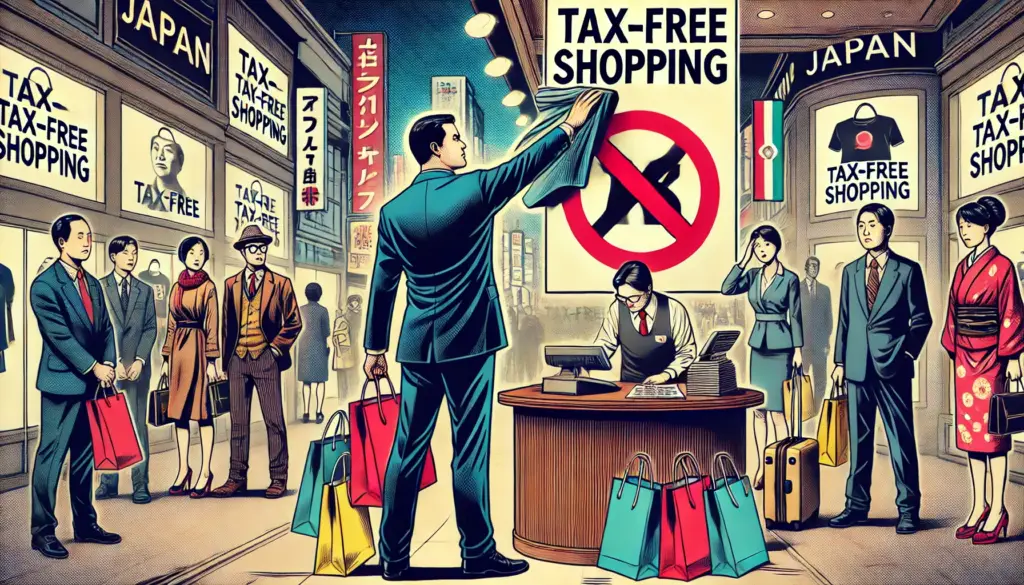
For decades, Japan’s tax-free shopping system has been one of the country’s most attractive perks for overseas visitors. By presenting a passport at designated stores, foreign tourists have been able to purchase goods without paying the 10% consumption tax. From luxury brands in Ginza to electronics in Akihabara, the system has encouraged travelers to spend more, boosting retail and tourism revenues.
But in recent years, the debate has shifted. Concerns over fairness, tax revenue loss, and abuse of the system have ignited discussions about whether this benefit should be scaled back—or abolished entirely. 🌏🛍️
How the Current System Works
Under the current model, eligible tourists—those who have been in Japan for less than six months and do not reside in the country—can make purchases without paying consumption tax. Retailers process the paperwork on the spot, and the tourist leaves with the product at a tax-free price.
The system applies to two main categories:
- General goods – Clothing, electronics, watches, cosmetics, jewelry, etc.
- Consumable goods – Food, beverages, cosmetics for use, and other perishables, provided they are sealed and taken out of Japan within 30 days.
Tourists must typically spend at least ¥5,000 in a single store on the same day to qualify. The goods are intended for personal use outside Japan, not for resale domestically.
Why the Government is Rethinking the System
1. Abuse and Illicit Resale
In recent years, there have been cases of foreign visitors purchasing goods tax-free and reselling them within Japan to avoid the consumption tax. This is particularly common with high-demand products like cosmetics, luxury goods, and electronics.
2. Lost Tax Revenue
With the rise in inbound tourism, the volume of tax-free purchases has surged. While great for retailers, this has meant billions of yen in forgone tax revenue. For a government facing rising social security costs and budget deficits, this is a pressing concern.
3. Fairness to Residents
Many Japanese citizens question why visitors get to avoid paying the same tax locals must pay daily. With living costs rising, the perception of inequality has grown stronger.
The Proposed Changes
The government is considering a major shift to a refund-at-departure model. Under this system:
- Tourists would pay the 10% consumption tax at the time of purchase.
- Upon leaving Japan, they could claim a refund at airports or ports after showing receipts and purchased goods.
- This approach is common in Europe and reduces the chance of tax-free items being consumed or resold domestically.
The transition could take place within the next couple of years, with full implementation expected before the end of the decade.
The Case for Abolition
Those supporting full abolition of tax-free shopping for foreign tourists argue:
- Equality: All consumers in Japan should pay the same tax, regardless of nationality.
- Revenue Protection: Tax income could be redirected to public services, infrastructure, or tourism promotion that benefits both residents and visitors.
- Abuse Prevention: Eliminating the system entirely removes loopholes exploited for illegal resale.
The Case for Keeping It
On the other hand, advocates for keeping the system highlight:
- Tourism Competitiveness: Tax-free shopping is a selling point for Japan in the competitive global tourism market.
- Spending Stimulation: Removing the perk could discourage big-ticket purchases, reducing overall tourist spending and hurting retailers.
- International Norms: Many countries offer tax relief on goods taken out of the country, and ending it could make Japan appear less welcoming.
Economic Stakes
The stakes are high. Inbound tourism has been a vital growth engine for Japan’s economy, especially after the reopening of borders. Foreign visitors not only shop but also spend on hotels, restaurants, attractions, and transportation. Tax-free shopping plays a role in that ecosystem—especially for high-spending travelers from China, Southeast Asia, and the Middle East.
If the system were abolished without alternative incentives, luxury boutiques, electronics shops, and duty-free counters could see a sharp drop in sales. However, the government could offset this by promoting experience-based tourism—local culture, gastronomy, outdoor adventures—where the focus shifts from buying goods to enjoying activities.
Public Sentiment
On social media and in opinion polls, many Japanese citizens voice frustration. A common comment:
“I pay 10% every day, why should tourists get a free pass?”
For some, it’s not about the economic logic, but about fairness and equality. In their view, tourists should contribute to the cost of maintaining infrastructure and services they use while visiting—roads, trains, waste disposal, police, and emergency services.
My Perspective: Balance, Not Extremes
Rather than an all-or-nothing approach, Japan should adopt a balanced reform:
- Introduce the refund-at-departure model nationwide to reduce abuse.
- Lower the qualifying purchase amount for refunds to keep it attractive to mid-budget travelers.
- Promote experiences over goods—traditional craft workshops, food tours, seasonal festivals—that are immune to resale abuse.
- Redirect part of tourist tax revenue to benefit local communities, making residents feel the benefits directly.
This would ensure that Japan remains a top shopping destination while addressing concerns over fairness and lost revenue.



















































